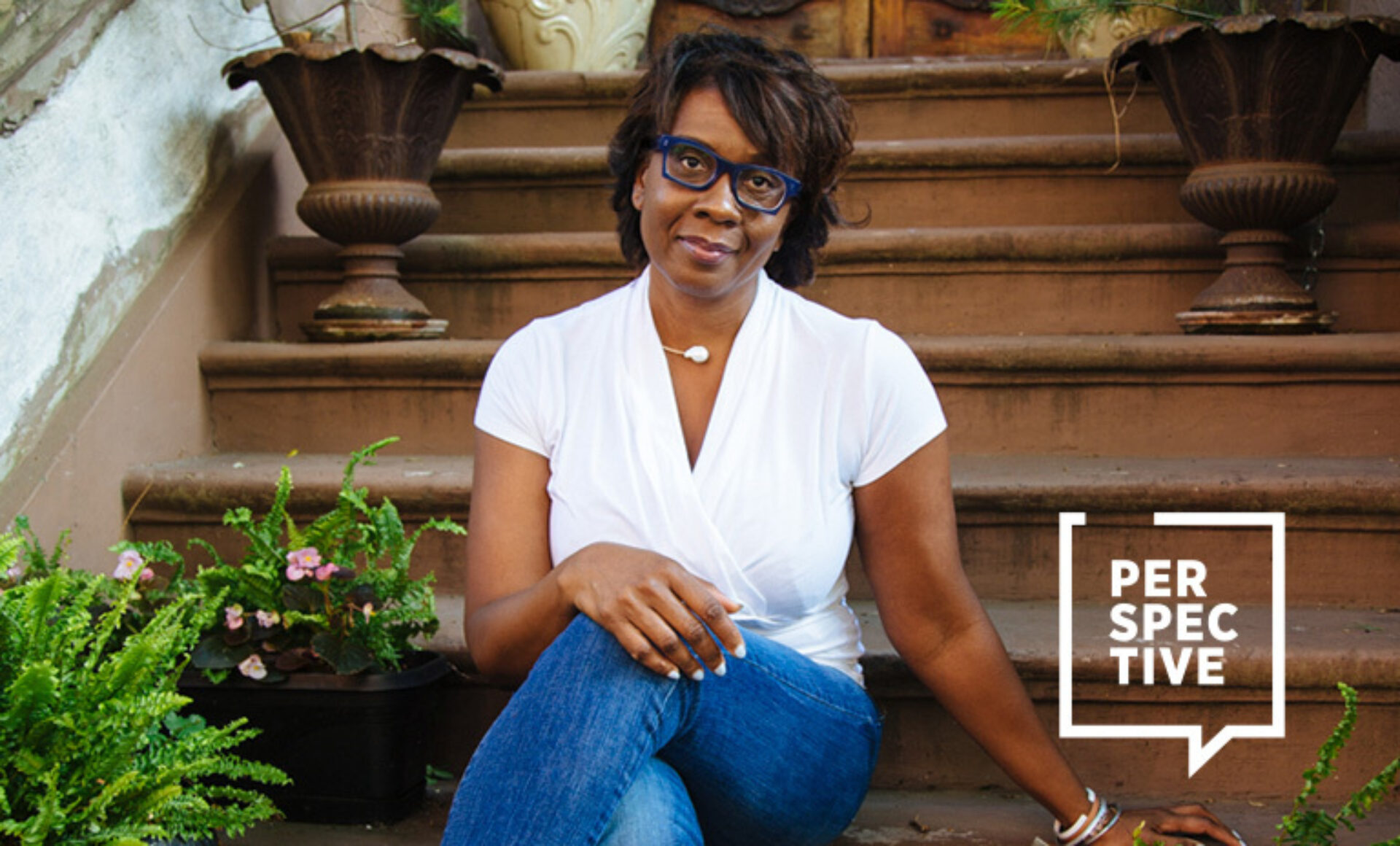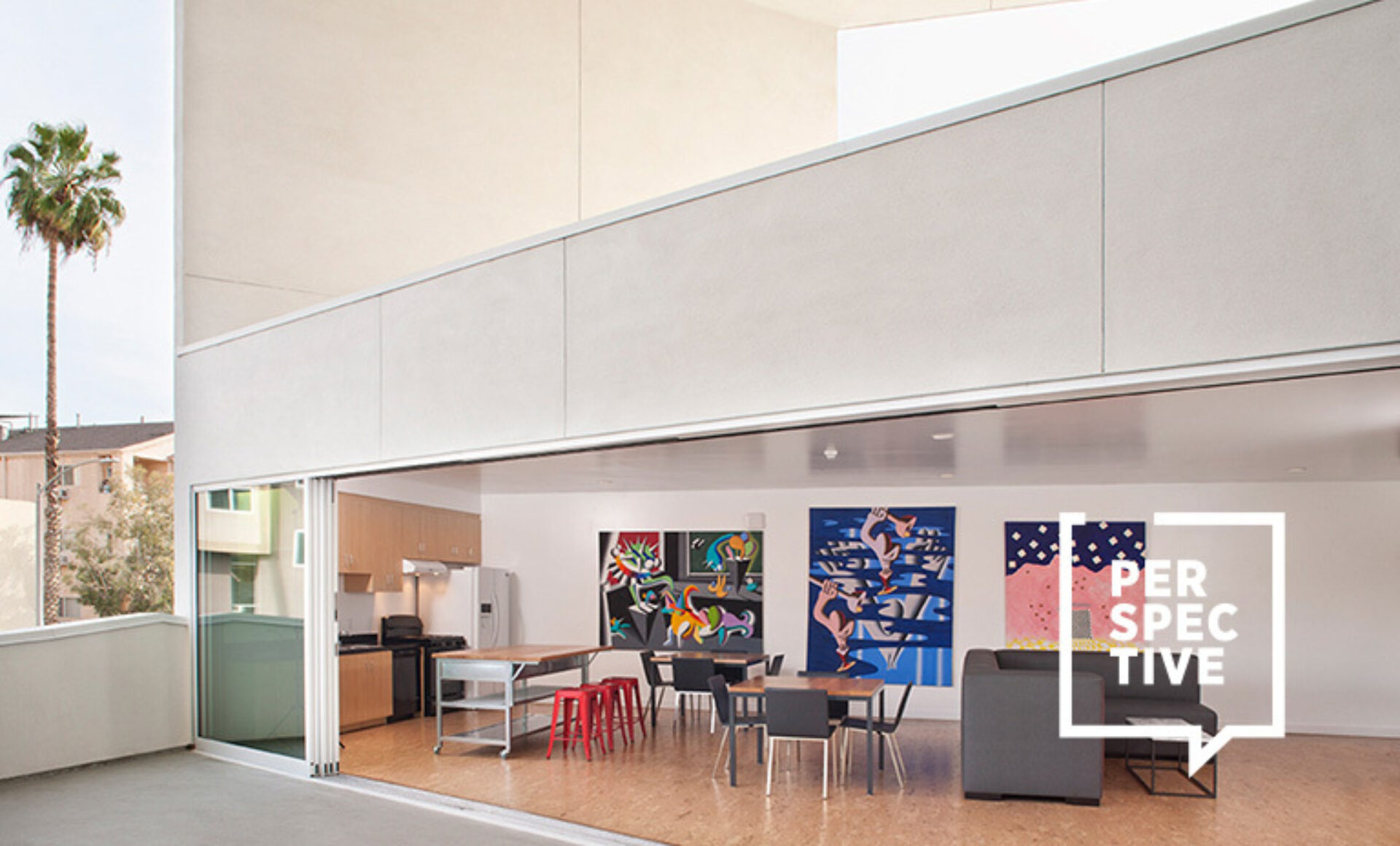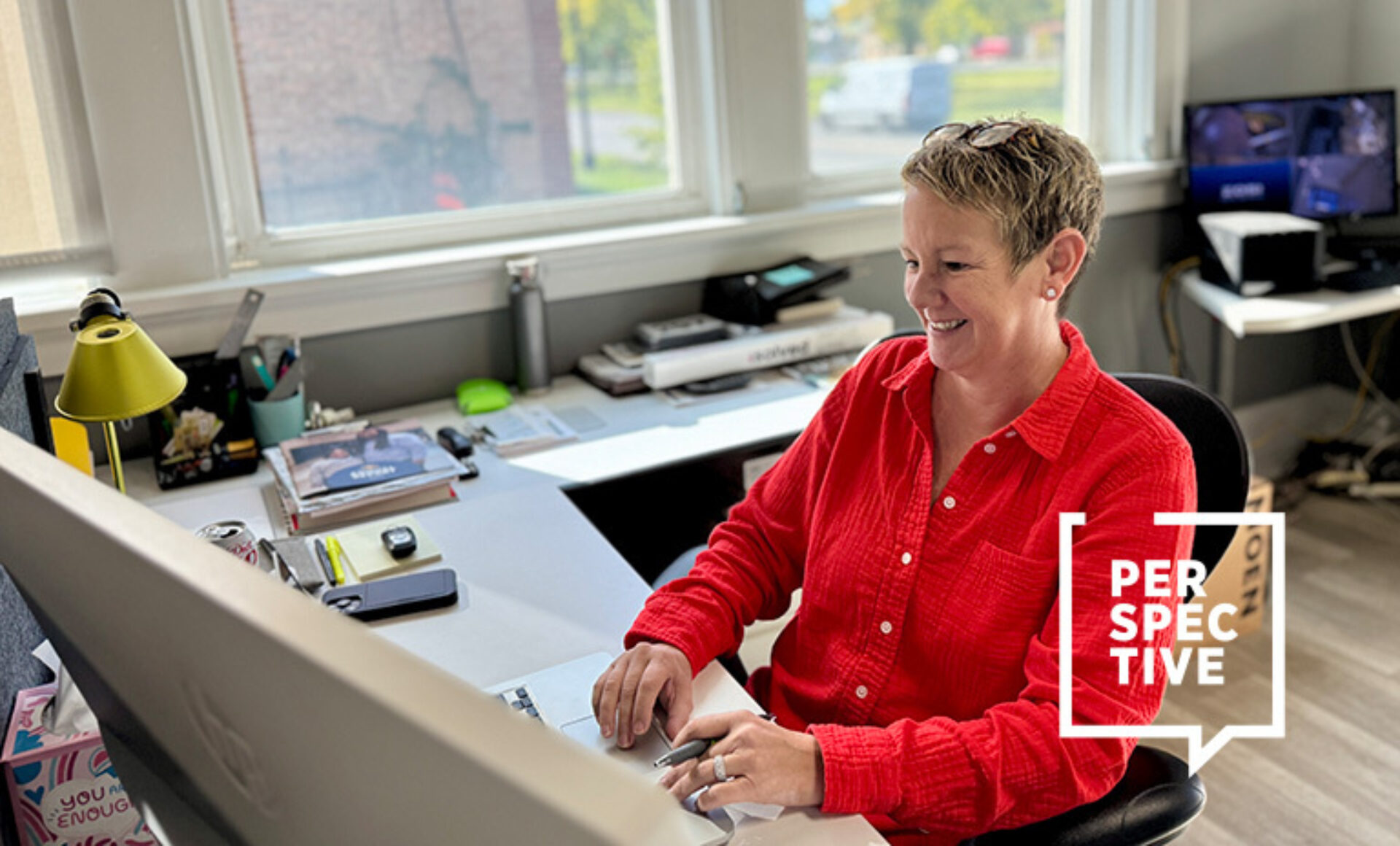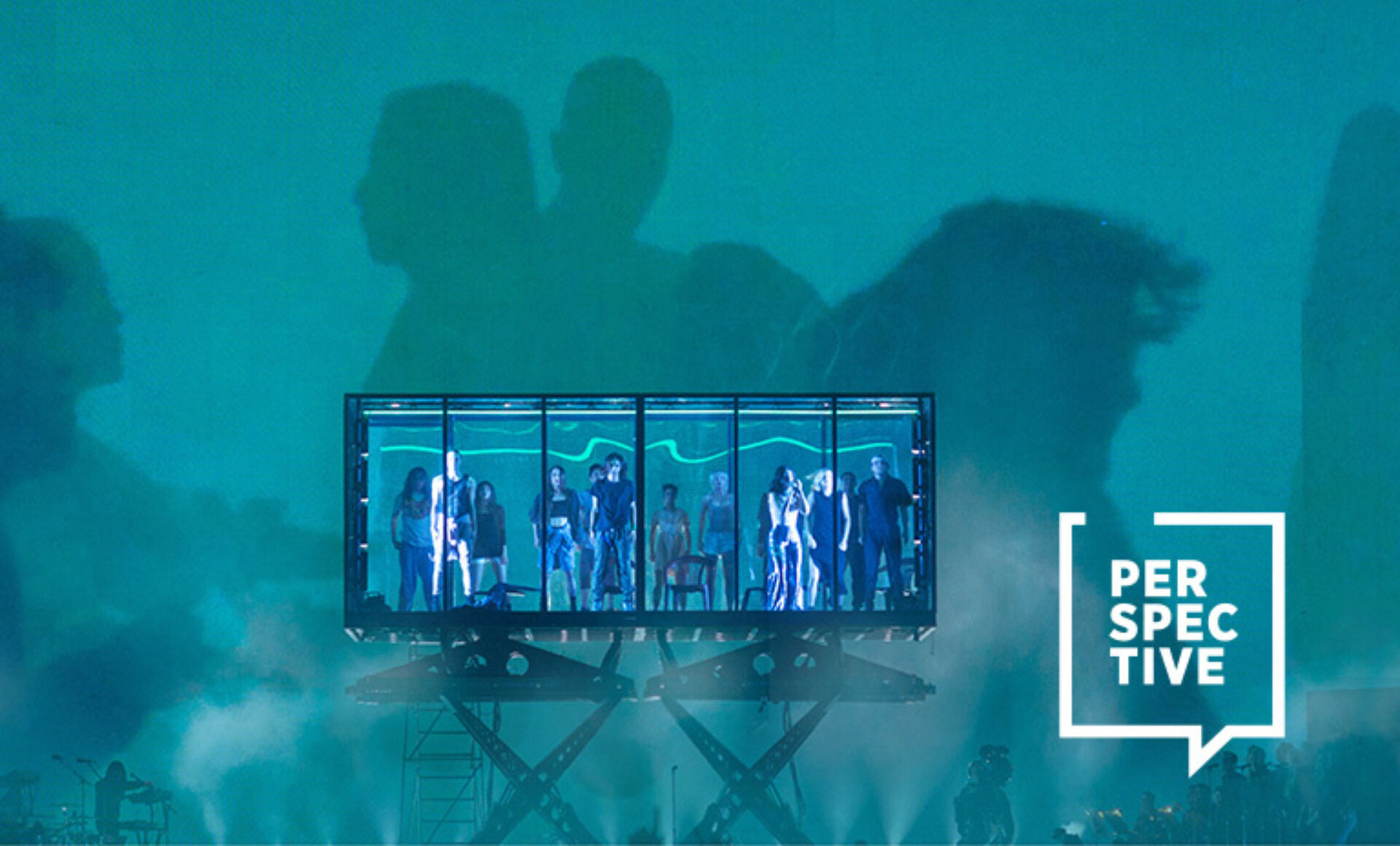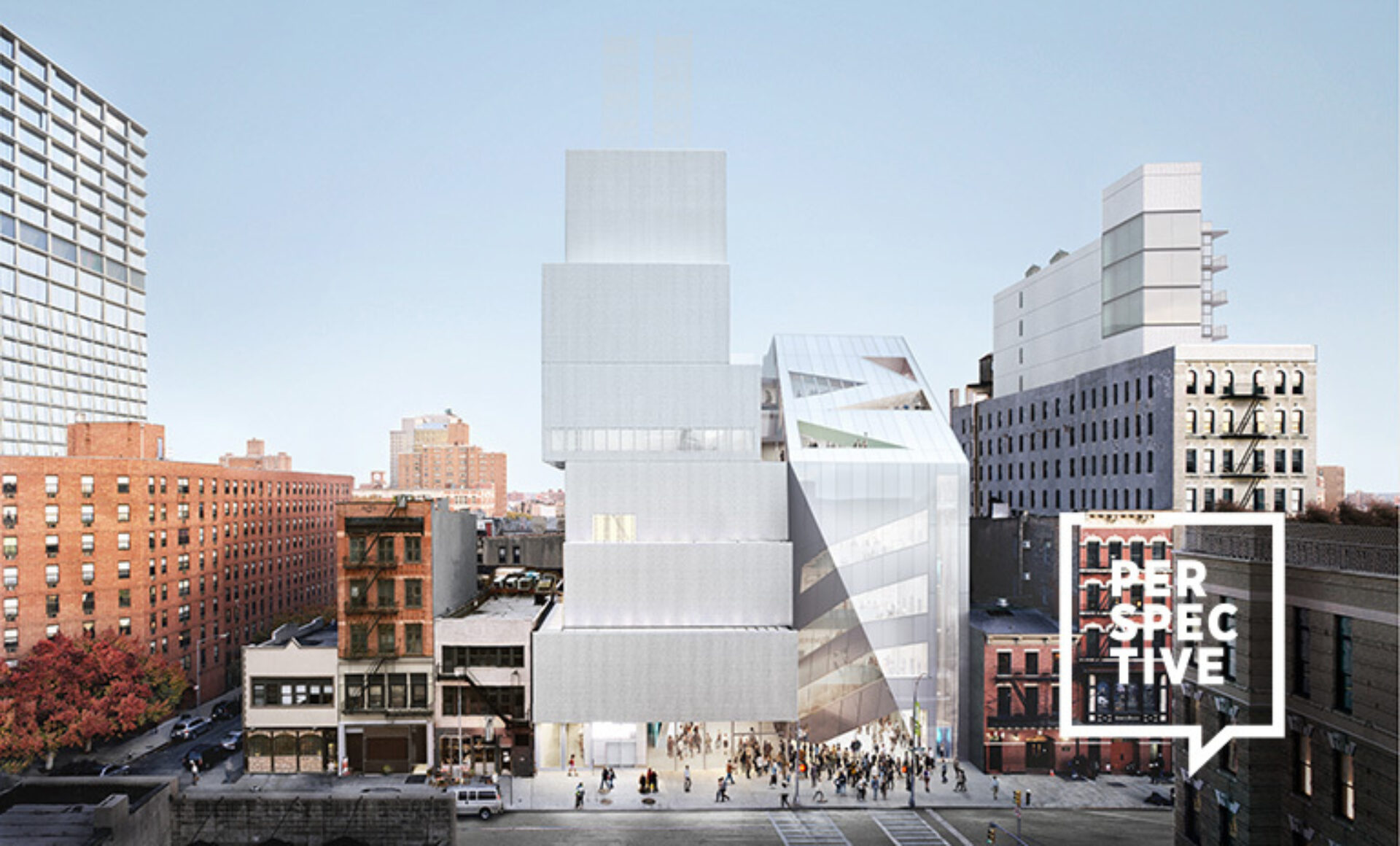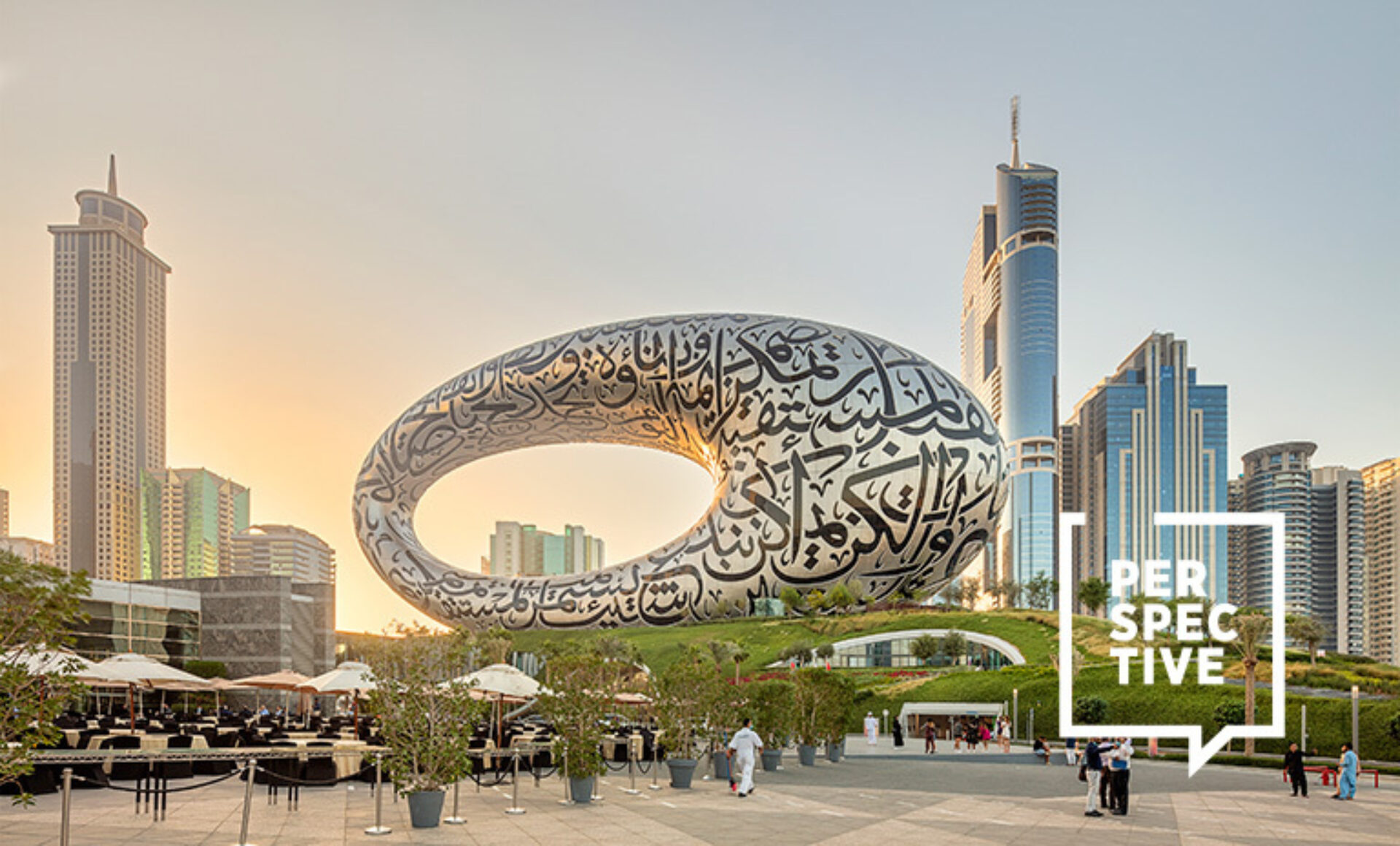(Above: Photo by Yumeng Zhu, courtesy of Snøhetta)
Anyone who, like me, was infatuated with the romantic comedy “Love Actually” in the early 2000s remembers that opening voice-over from Hugh Grant. As we watch scenes of loved ones embracing at the airport, Grant delivers that memorable line: “Love is all around us.”
These days, when I think of those words, I often swap out “love” for “design.” I still believe in the power of love, and the power of Hugh Grant, but spend enough time working at IIDA, and you start to see design everywhere.
Design is literally all around us — from music video sets to museum exhibitions, concert stages to sports arenas — and that ubiquity was the focus of our summer issue of Perspective. What else seems to be omnipresent? Striking projects from global architecture and design firm Snøhetta. Just look up, or look online, and it's easy to stumble on an arresting assemblage of architecture, interiors, and landscape design created by the firm, which has studios in eight cities that span four continents. Below you’ll find four Snøhetta projects that remind us that design surrounds us and supports us, and good design — like love, actually — is essential.
A Singular Retail Experience
This is not your grandmother’s store — New York’s 113 Spring represents a new approach to retail. The 3,000-square-foot space focuses on wellness, is situated in SoHo (at 113 Spring St., cleverly), and specializes in experience. 113 Spring’s offerings vary depending on seasonal themes, and that intentional impermanence was built into the design.
In talks with the client, the design team homed in on two key words: “one was fluidity and the other ephemerality,” said Marc-Andre Plasse, Snøhetta’s director in New York, in an interview with Surface magazine.
What is constant: The space’s white oak floors, calming color palette, and the transparent screen (both reusable and recyclable) near the entrance that piques visitors’ curiosity and encourages them to step around and explore. A variety of spaces offer bespoke experiences, from a maker bar where guests can create custom items to a community area and private rooms. Sustainability is also front and center — the flooring is clipped in, so it can easily be removed and used elsewhere, furniture was designed for reconfiguration and reuse, and the walls are coated in mineral paint, a healthier option than acrylic.
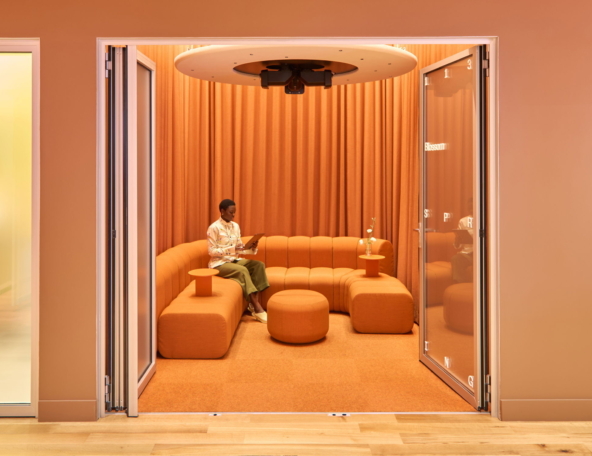
Photo by Hanna Grankvist, courtesy of 113 Spring
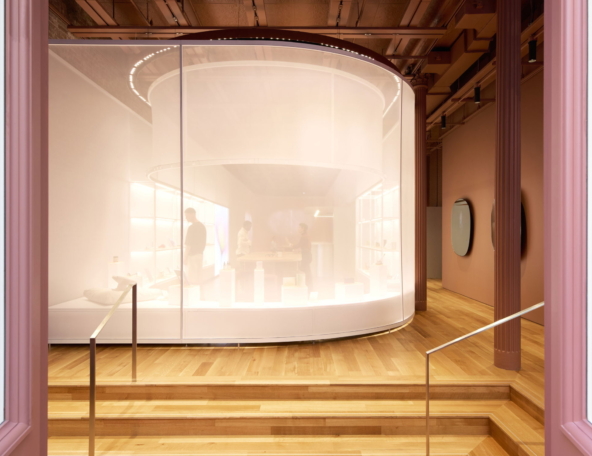
Photo by Hanna Grankvist, courtesy of 113 Spring
A Museum That Commits to Going All the Way
The Museum of Sex is all about the history and cultural significance of human desire, and Snøhetta’s design of the Miami location turns up the temperature. With vivid, can’t-look-away elements, Snøhetta injected energy and fun into design concepts for the museum’s lobby, galleries, retail space, and exterior.
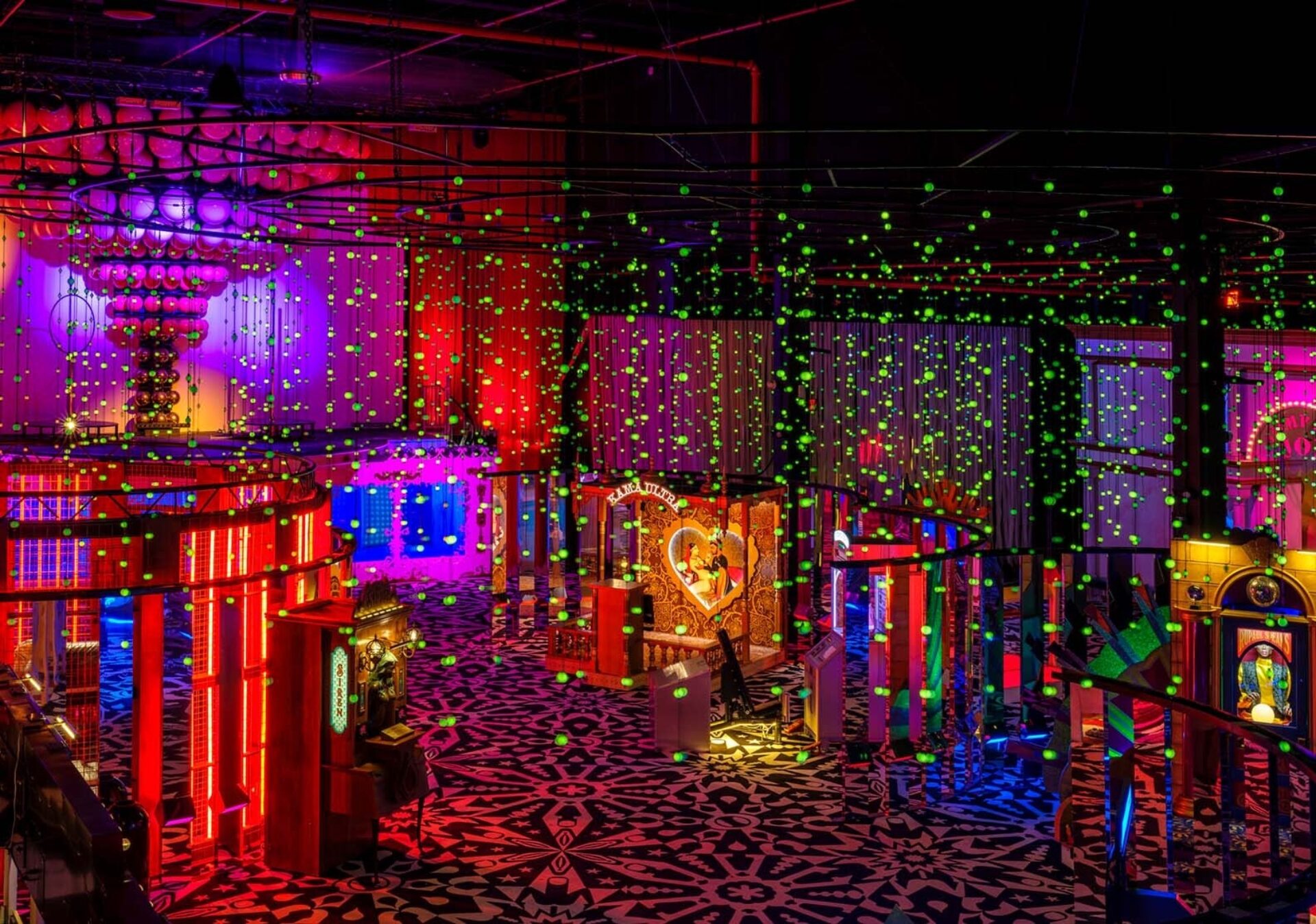
Photo by Michael Stavaridis, courtesy of Snøhetta
To complement a permanent exhibition, “Super Funland: Journey into the Erotic Carnival,” which immerses viewers in the sexual history and sensory experience of carnivals, the design team crafted interactive spaces, games, and showstoppers, including a 40-foot-wide mermaid tank and fountain.
The design is rooted is “rooted in positivity and joy,” said Anne-Rachel Schiffmann, Snøhetta interior architecture discipline director. “As we have pursued creating places that bring people together, our team embraced the levity that characterizes Museum of Sex, working to translate this perspective into a collection of interiors that embrace fun, laughter, and unity.”
A Haven for Library Lovers
It’s hard to quantify the power of a library, but the following statistics are astounding. The Beijing Library, which opened to the public in December of 2023, had more than 3.7 million visitors in 2024, and hosted over 3,000 educational and cultural events. Home to the globe’s largest climatized reading space, the Beijing Library was designed by Snøhetta and Chinese architectural firm ECADI.
Lined in glass — in fact, the library features China’s largest load-bearing glass system — the building is awash in natural light, and there are myriad references to natural elements. The curving, sculptural interior landscape mimics the flow of the Tonghui river, which is nearby, and the ceiling panels are shaped like the leaves of gingko trees, native to China. Actual gingkos are planted near the library’s entrances.
The building layout allows for varied experiences; in addition to the central open area, there are spaces for performances, exhibitions, conferences, and ancient book restoration. Sustainability is woven into the fabric of the exterior and interior design — the library earned China’s GBEL Three Star, the country’s highest sustainability standard.
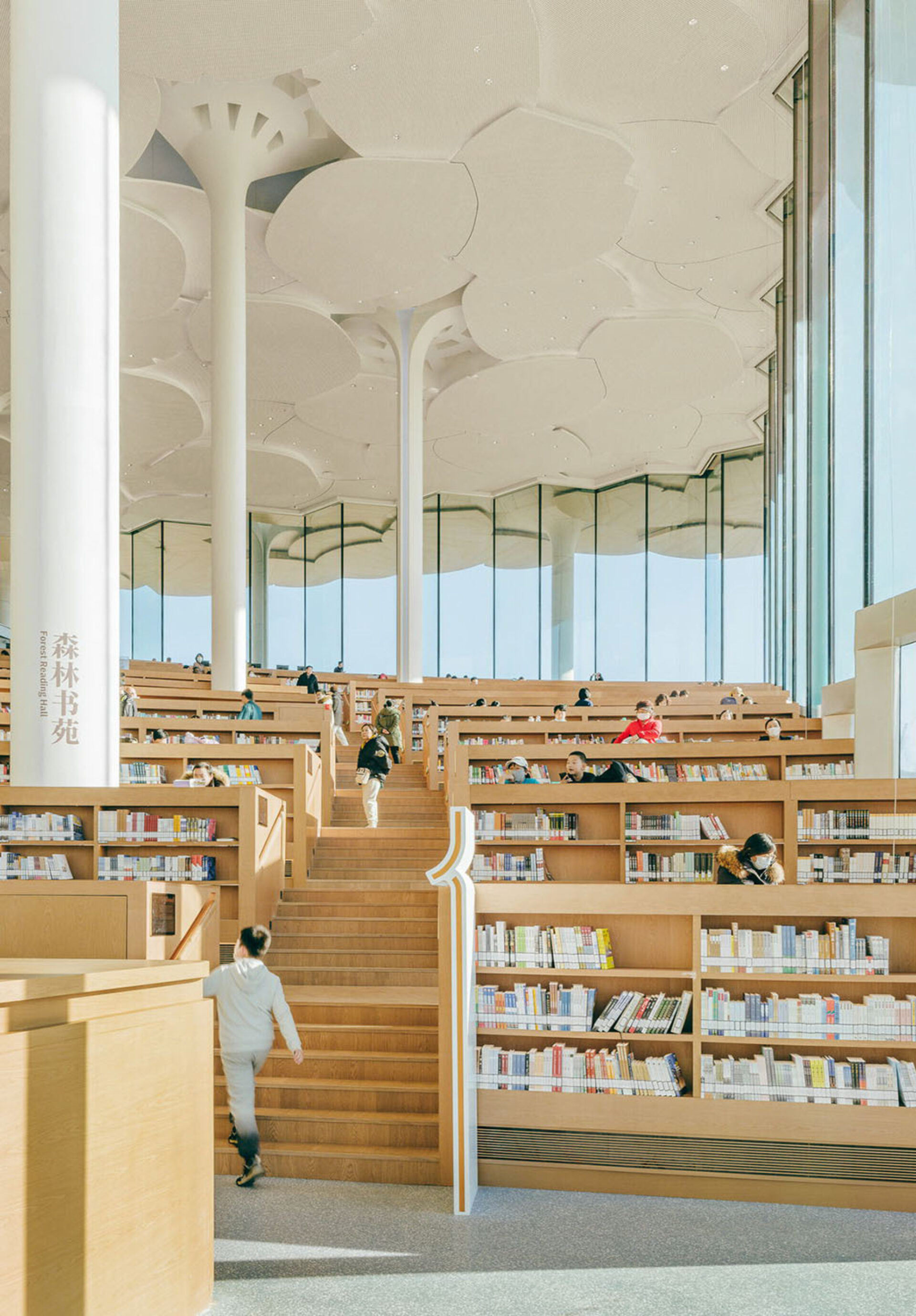
Photo by Yumeng Zhu, courtesy of Snøhetta
A Restaurant That Gets Deep
Fancy a meal under the sea? Head to Europe’s first underwater restaurant. Norway’s Under seats about 40 guests for dinner in its intimate dining room, which rests on the seabed and offers diners an underwater view.
The building, wrapped in concrete, begins above ground and extends downward into the sea. It’s situated on the southernmost tip of Norway’s rocky coastline in an area replete with marine life — convenient, because Under also opens its space to marine biologists and other researchers (cameras are installed on the building’s exterior to aid in those efforts).
Inside, acoustical ceiling panels covered in custom textiles simulate the color of sunset. Snøhetta collaborated with Kvadrat to create the textile, also called “Under.” Also bespoke: a furniture series created for the restaurant, in partnership with Hamran, a local carpentry workshop. “In this building, you may find yourself under water, over the seabed, between land and sea,” said Kjetil Trædal Thorsen, Snøhetta co-founder and architect. “This will offer you new perspectives and ways of seeing the world, both beyond and beneath the waterline.”
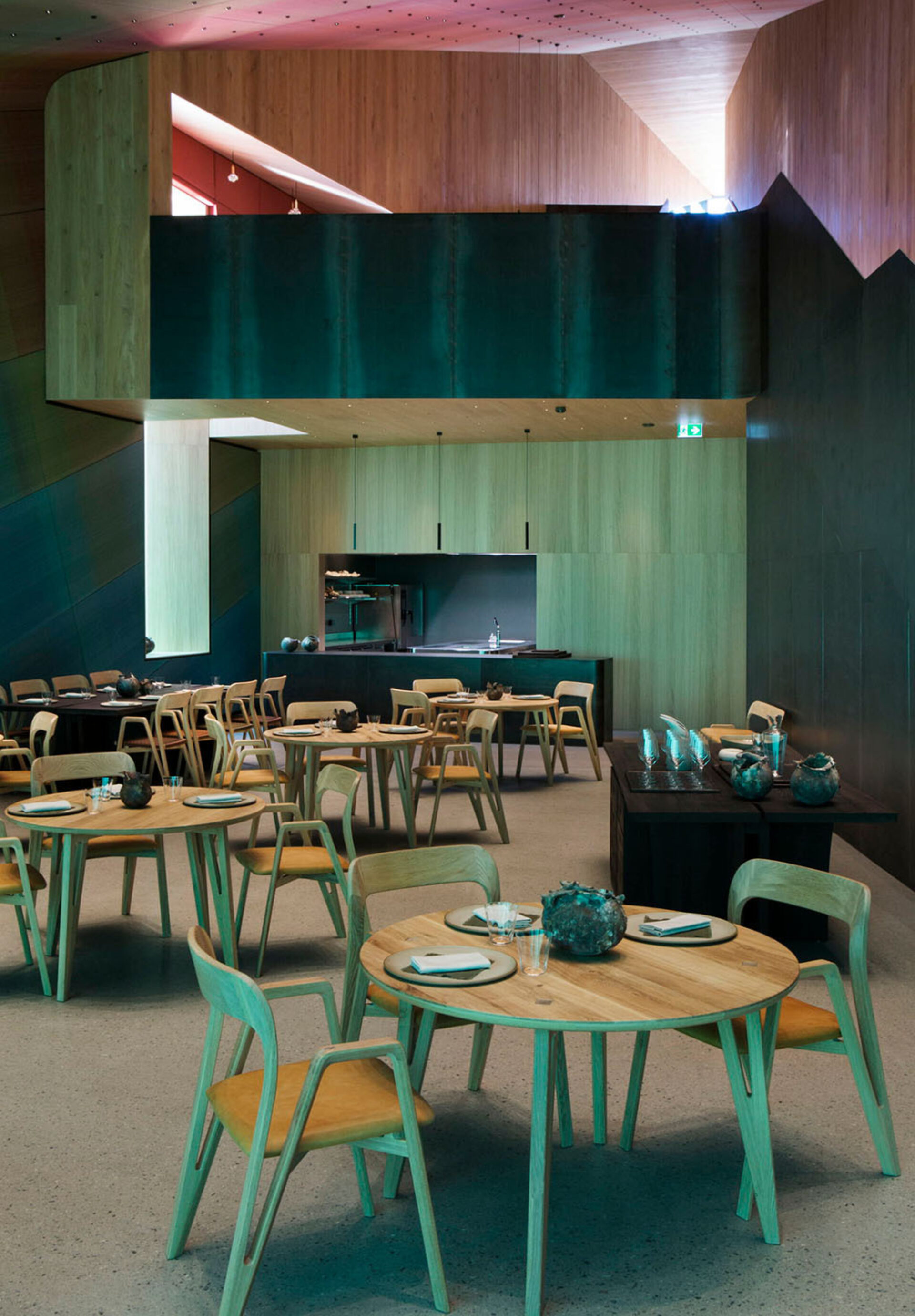
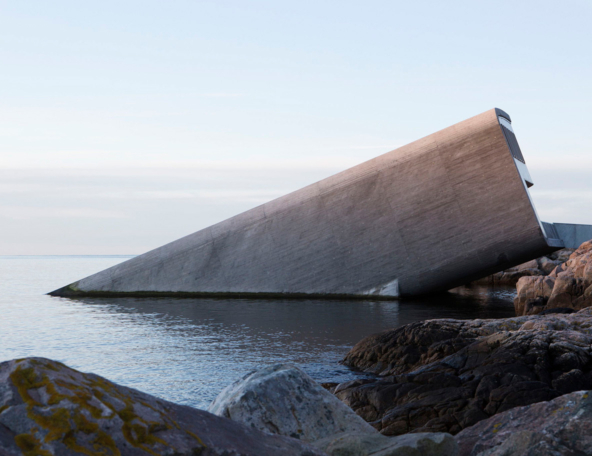
Image courtesy of Snøhetta
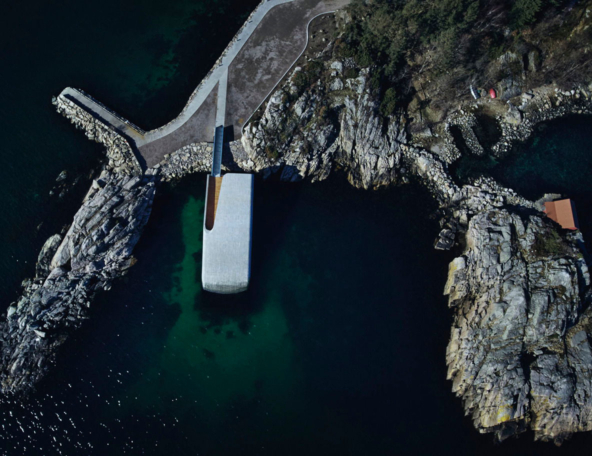
Image courtesy of Snøhetta


